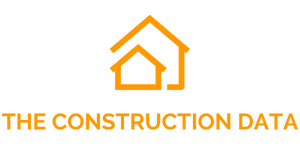
44% of U.S. Firms Shifting Tariff Costs to Customers
Zilliant, a leader in pricing lifecycle management, has released findings from its 2025 Business Tariff Impact Survey, shedding light on how U.S. business leaders are adjusting pricing strategies in response to changing trade policies and macroeconomic pressures. The survey, which included insights from 400 senior executives such as CEOs, CFOs, and CROs from organizations with over $250 million in annual revenue, reveals a strong trend toward passing increased costs to customers and shifting suppliers due to recent changes in U.S. tariff strategies.
“Businesses continue to face difficult decisions about how to manage changing cost structures,” said Pascal Yammine, CEO of Zilliant. “However, the last five years of economic disruption and inflation have equipped them with the tools and experience needed to navigate these challenges. This survey provides a clear picture of the strategic decisions companies are making to preserve profitability while facing volatile conditions. Transparency with stakeholders, including customers and shareholders, will be critical to managing these changes effectively.”
The survey highlights that 90% of business leaders acknowledge that macroeconomic factors have significantly influenced their pricing decisions over the past 12 months. Of those, 44% described the impact as either “significant” or “severe,” emphasizing how external economic factors are deeply affecting operations and bottom lines.
Tariffs Drive Strategic Shifts
Tariffs have become a key driver of strategic business decisions in 2025. According to the survey, 23% of executives cited tariff-related expenses as their top pricing challenge for the year, ranking second only to competitive pricing pressures, which were identified by 33% of respondents.
In response, companies are implementing several strategies to mitigate the financial burden caused by tariffs:

- 44% of businesses intend to pass on increased costs directly to customers.
- 45% of respondents named tariff-related expenses, including the tariffs themselves and the associated increase in supplier costs, as their biggest pricing challenges in 2025.
- 42% of companies have adjusted their supply chains, either by switching suppliers or sourcing from different regions, as a way to adapt to the tariff landscape.
This data points to a significant transformation in supply chain management and pricing tactics, with companies actively seeking to maintain profitability while minimizing customer dissatisfaction.
Competition and Tariff Uncertainty Top Future Concerns
Although tariffs are a pressing issue, competition remains the most cited concern. In fact, 33% of respondents view competitive pricing as their primary challenge in 2025. When asked to look ahead 12 to 24 months, both “competitive price wars” and “tariff and trade uncertainty” were tied as top concerns, each receiving 27% of responses.
“We’re witnessing a fundamental change in how companies approach pricing,” noted Stephan Liozu, Chief Value Officer at Zilliant. “Rather than using broad price hikes, smart organizations are implementing more nuanced, targeted pricing strategies that aim to balance profitability with competitive positioning.”
This balance will be critical as businesses try to maintain their market share while absorbing increased costs due to tariffs and inflation. The survey suggests that pricing strategy has evolved from being a back-office concern to a central component of corporate strategy.
Optimism Amidst Uncertainty
Despite these challenges, the outlook is largely optimistic. A significant 87% of executives expressed confidence in their ability to remain profitable under current economic conditions. This optimism may be driven in part by the increasing adoption of advanced technologies.
Notably, 83% of surveyed companies are already using AI-driven pricing solutions to respond to market volatility. These tools allow businesses to rapidly adjust prices, predict customer behavior, and develop more resilient pricing models that can withstand economic shocks.
Pricing Decisions Now Led by Top Executives
The study also reveals a shift in the ownership of pricing strategy within organizations. CEOs and Chief Commercial Officers (CCOs) are now more directly involved in pricing decisions:
- 98% of businesses have a clearly designated internal decision-maker responsible for pricing strategies in response to market conditions.
- 87% of CCOs reported that they hold the final say in pricing decisions.
- 68% of CEOs also claimed decision-making authority in this area.
- Interestingly, when asked who should be responsible, 56% of all respondents said the CEO should lead pricing decisions.
This executive-level involvement reflects the strategic importance of pricing in today’s complex market environment. With tariffs, inflation, and competition simultaneously impacting operations, pricing is no longer simply a finance or sales concern but a key element of overall corporate strategy.
Broad Industry Representation
The survey included responses from a diverse range of sectors, including manufacturing, finance, IT/telecommunications, retail, construction, education, and more. This wide industry scope provides valuable insight into how tariff pressures are affecting different parts of the economy. While the challenges may be shared, the responses vary by industry, with some more agile or better positioned to adapt than others.
Zilliant plans to release the full survey report next week, offering a more detailed analysis of how individual industries are responding to these challenges and outlining strategic recommendations for navigating the increasingly complex pricing landscape.




